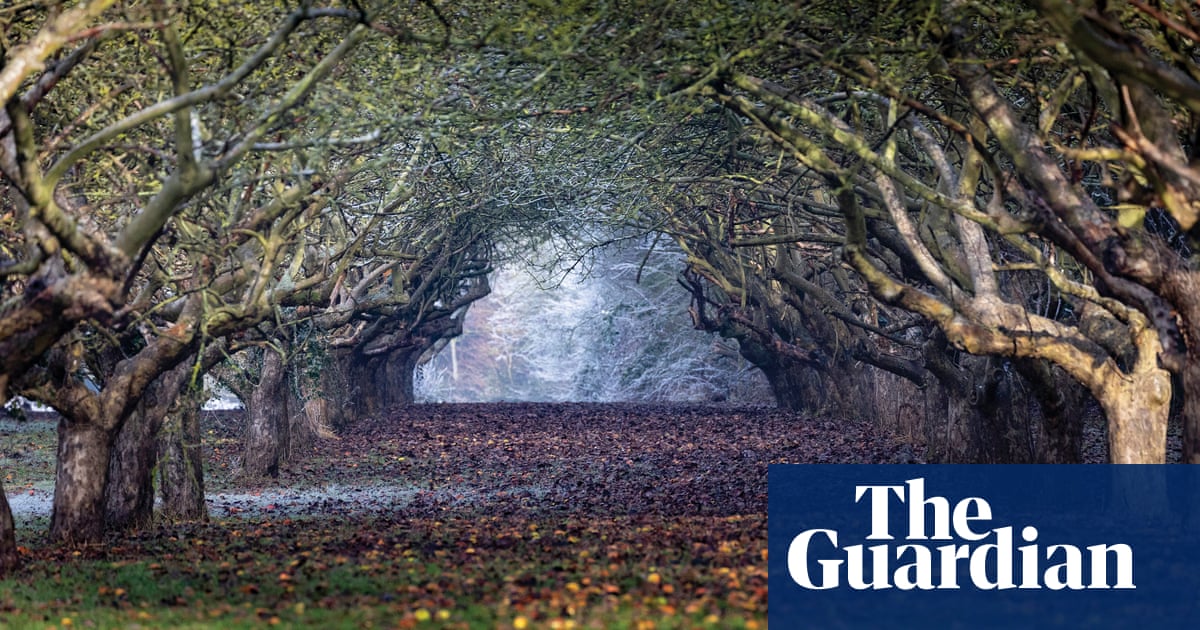
As cars and lorries snail interminably along the A30 in Cornwall – the county’s notorious trunk road – the words of the furious driver in John Betjeman’s poem, Meditation On The A30, seem befitting: “I can’t go on crawling like this!”
Such frustrations are especially acute in summertime when tourists compete with hauliers, tractors and local residents for space on the asphalt, many of them en route to the coastal hotspots of Perranporth and St Ives. But those days could soon be gone.
A £330m roadworks scheme is nearing completion, with National Highways creating an 8.7-mile stretch of dual carriageway between Carland Cross and Chiverton, parallel to the existing A30, bringing the promise of prosperity for the local economy, as well as fears for the environment at a time of global heating.
“For decades, this section of road has been a bottleneck because it’s the last bit of single carriageway between Birmingham and Camborne,” says Nick Simmonds-Screech, project director at National Highways. “We’re hoping to dramatically reduce journey times and create safer journeys end-to-end, while removing the county’s worst accident blackspot [the Chiverton roundabout].”
He describes the upgrade scheme, which received £20m from the European Regional Development Fund but is otherwise financed by central government, as a “legacy project”. Estimates suggest it could boost the local economy by up to £750m over 60 years, with the tourism industry a major beneficiary.
Josh Taylor, general manager of Surf Bay Holidays, which owns holiday parks near Perranporth and Penzance, says the scheme will open up Cornwall.
“The past few years [during construction] have been pretty horrific but it’s going to be fantastic when it’s done,” he says. “It’ll be less of a chore to get down here and visitors will find it quicker to get to attractions like the Eden Project, Land’s End and the Minack Theatre. I hope there’ll be a trickle effect in the years ahead as people tell their friends how easy and enjoyable it is to holiday in Cornwall.”
Malcolm Bell, executive chairman of Visit Cornwall, agrees. “The Cornish tourism economy is worth £2bn annually so if this helps by even 1% that’s huge,” he says. “The one thing we always know in tourism is that it’s not the length of the journey that matters most to people, it’s the reliability. We should be celebrating improved connectivity.”
However, not everyone is celebrating. Organic farmer Peter Mewton is one of many locals to endure compulsory purchase of land; he has lost four hectares (10 acres), a tenth of his farm, and says it has caused deep turmoil.
“I see it as a destruction project, not a construction project,” he says. “They’ve unnecessarily knocked down hundreds of mature trees, and the destruction of the soil science and the mycorrhizae is just phenomenal. This might sound precious but iIt’s affecting me mentally and spiritually. I created this farm and what they’ve done is an insult to me.
“I’ve expected a new dual carriageway for a long time and I begrudgingly accept the need for some improvement, but why couldn’t they just widen the existing A30?”
After discovering that many of the fields around Mewton’s farm have historic names, such as Jose’s Meadow and Shop Meadow, Mewton’s friend, Lucy Trinder, created a protest group called These Fields Have Names.
“There are stories and memories with every field that go back generations, you can’t just eradicate them,” she says. “We’re faced with climate collapse and societal collapse. We should stop road building and invest in public transport instead. If you build more roads, you just encourage more traffic.”
Taking an opposing view, local resident Dave Roberts says: “I think it’s bloody brilliant. During the summer holidays you’d normally see solid traffic for 10 hours a day and smog billowing down – it was an environmental catastrophe. In future, the traffic will be flowing so the cars will emit less pollution, and most of them will be electric in 10 years anyway.”
Mark Overend, a resident in Marazanvose, is also content despite the development being close to his home. “We bought our house in 1991 knowing there were plans to redevelop the A30 but not knowing where it would end up,” he says.
“They’re building the new road about 50 metres in front of our house, but they’ve dug it down so it’s out of sight. We’ve been told our property has actually gone up in value by £50,000 [following the roadworks]. Our only concern is whether the council agrees to reduce speeds on the ‘old’ A30 to slow local traffic.”
The landscape appears deeply scarred by the construction. National Highways estimates that 6.72 hectares (16.6 acres) of trees have been felled, while 11.18 hectares (27.6 acres) are being planted. Simmonds-Screech speaks proudly of implementing a number of measures to protect the environment. These include a so-called “green bridge”, which will allow wildlife to cross safely from one side of the road to the other – only the third such bridge in the UK – as well as a number of animal-sized tunnels for species such as deer and beavers. Elsewhere, local clay mining waste has been used as aggregate during construction.
Mewton dismisses this as mere “greenwashing” but Simmonds-Screech says: “Our biodiversity net gain is currently around 20% and that could rise because we’re building miles of traditional Cornish hedgerows which are great for wildlife.”
Originally scheduled for completion this winter, the dual carriageway won’t be in full flow untilMarch 2024 at the earliest. In the meantime, drivers must go on crawling.
“There was a rather significant global event [the pandemic] happening when we started, and in the last few months we’ve had heavy storms and an earthquake,” Simmonds-Screech says. “We’re delivering a really complex infrastructure programme, so I think people understand there’s got to be a little short-term pain for really significant long-term gain.”











